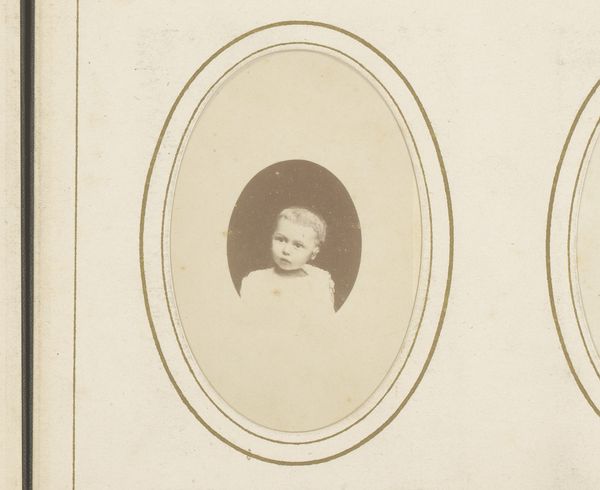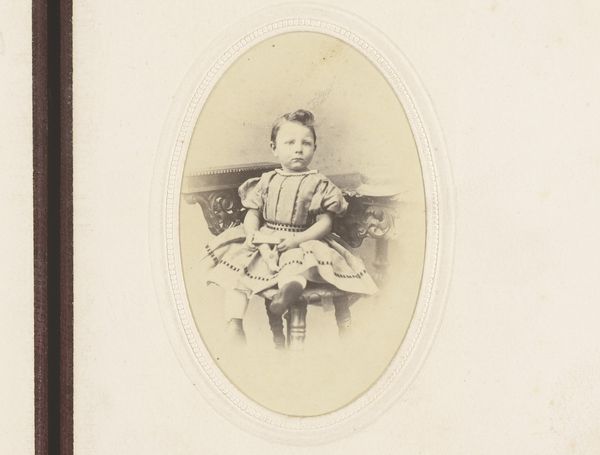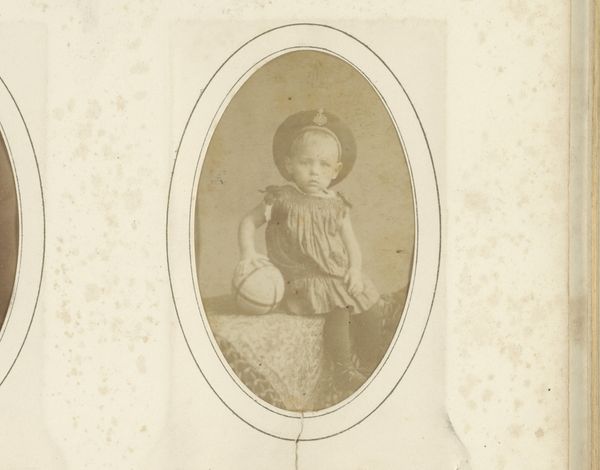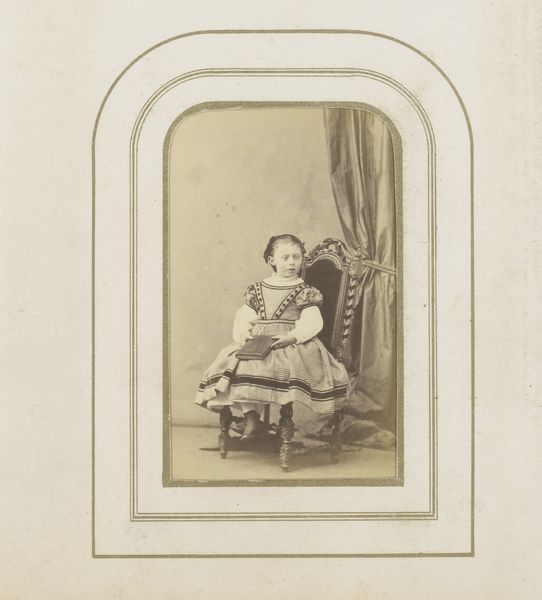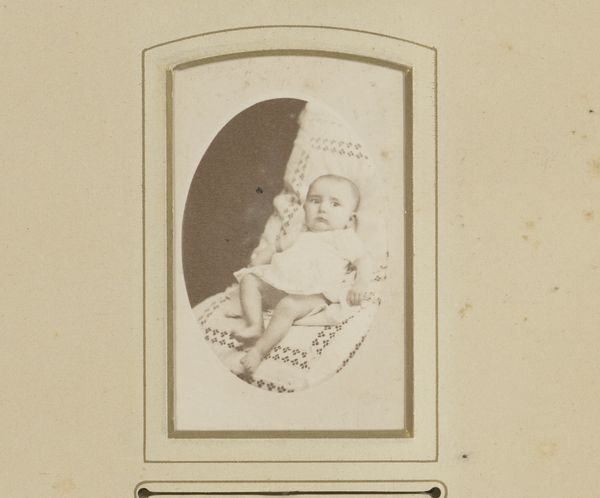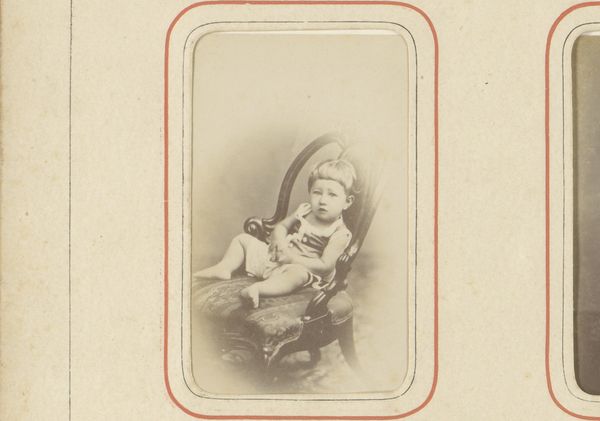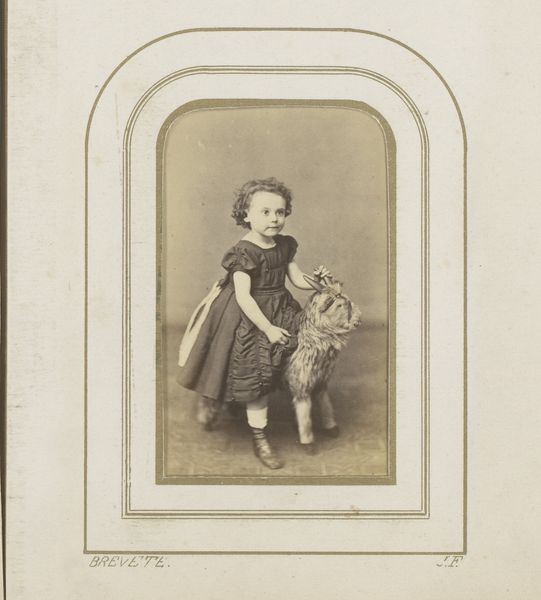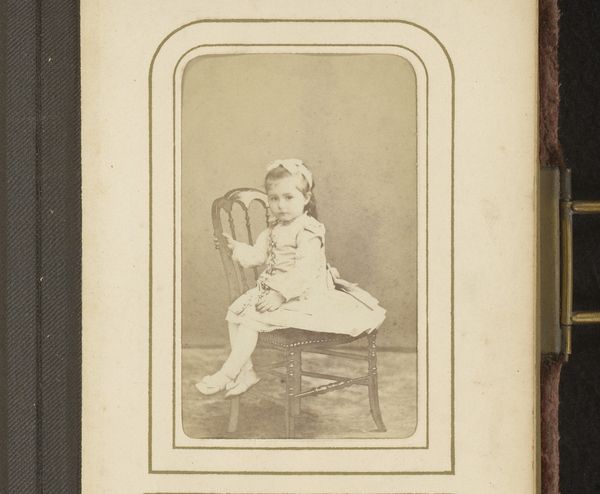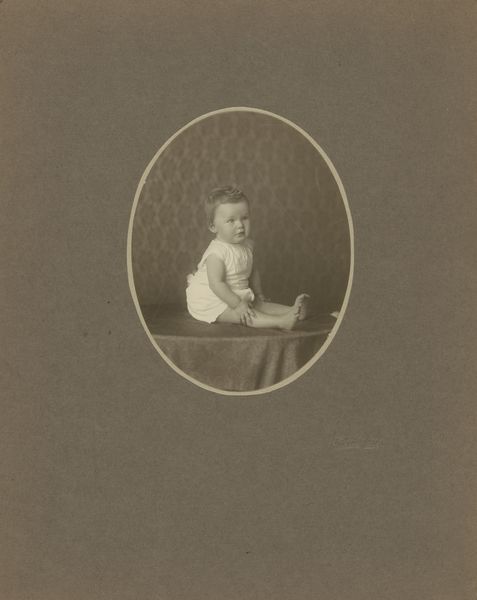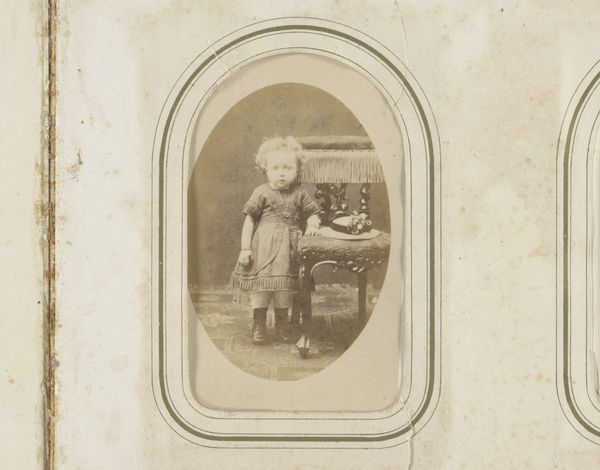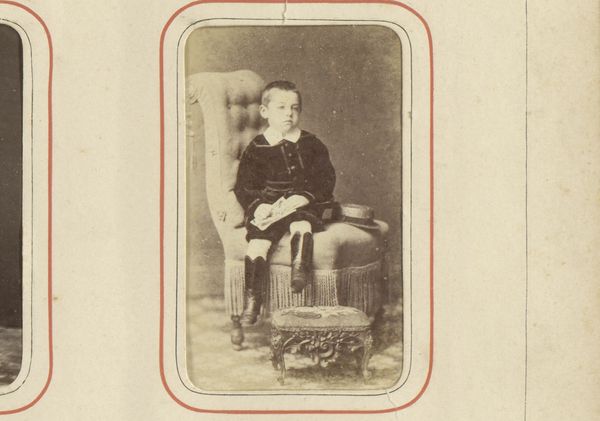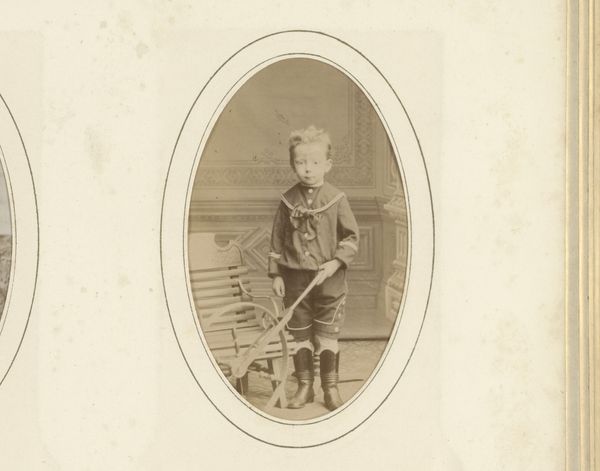
photography
#
portrait
#
still-life-photography
#
photography
#
genre-painting
Dimensions: height 82 mm, width 52 mm
Copyright: Rijks Museum: Open Domain
Curator: The melancholic stillness in this vintage photograph really gets to me; it’s an 1864-1890 work known as "Portret van een zittend meisje" or, "Portrait of a Seated Girl", believed to be made by Charles D'Hoy. Editor: Oh, she’s precious, yet there's a stark rigidity, almost a sense of entrapment within that oval frame—those elaborate outfits seem less for comfort and more for show. What do you read into that kind of enforced presentation? Curator: There's this bittersweet beauty, isn't it? I can imagine that she might be quite spirited actually. You can tell from her soft little eyes and hair. I bet that this exact still portrait captured this brief intersection between childhood innocence and adulthood’s constraints, framed as she is by expectations she likely can’t comprehend yet. I do feel this weird longing for her freedom... which is funny. Editor: It's fascinating how photography in that era became both a tool for preserving a specific narrative of innocence but, conversely, froze young girls in a performative stage of ideal womanhood. Did she ever get to be messy or explore outside this meticulously staged moment? Curator: That’s such a great point. I guess the lack of motion enhances the overall feeling of staged domesticity. Like a doll set just so in a dollhouse! Although the soft light makes it forgiving. The sepia hues kind of sweeten what might otherwise feel a bit... I don’t know...harsh. Editor: This visual tension speaks to the broader Victorian preoccupation with presenting the "perfect" feminine ideal—but whose ideal was it, really? Her small shoes and demure pose speak volumes about social expectations placed upon young women and girls. What does this image tell us about the limitations placed upon her life, compared to the freedoms enjoyed by her male contemporaries? Curator: I think that it reflects a controlled, refined kind of dream that might not exist beyond these constraints. To answer your earlier question though... I think what you see *is* the story, as sad as it is! Editor: So perhaps in viewing her, we not only remember her, but question whose gaze defined her reality and challenge those confining structures today. Thanks for the illuminating reflections on our young seated lady!
Comments
No comments
Be the first to comment and join the conversation on the ultimate creative platform.
